An E-Book for PMs
by Jess Erdman, Content Marketing LeadApril 2021

As a Product Manager in eCommerce, the number of tools available can seem overwhelming at times. With new tools available every day, it can be difficult to identify which tools are actually helping your product succeed, and which are another added complication.
In the world of online retail, we’ve seen innovation in every sense, from virtual fitting rooms to AI-based trend forecasting. But, where does this leave product managers? With an array of tools, but little information on the underlying problems they’re resolving.
Mayukh Bhaowal, Director of Product Management at Salesforce Einstein, points out the necessity for product managers to understand artificial intelligence in their domains. He says, “today, as Artificial Intelligence eats software, it is quietly transforming the product management role once again.”
For example, imagine a product recommendation system, powered by AI. In the past, a product manager would sit with a UI/UX designer to map out the specifications. With AI-powered tools readily available for businesses of all sizes, that process is no longer necessary, as the software comes mapped out. But, what is necessary is the ability to understand the AI landscape, and how it impacts the end user.
In this guide, we’ll go over everything you need to know about AI in fashion to be a more effective product manager in online retail, no matter where on the team you sit. We break down:
1-A Brief Overview of AI in Fashion
2-How Retail Customers Changed Post-Pandemic
3-Fashion Taxonomy Explained & How It’s Affecting the Way Users Search for Products
4- AI in Fashion: When & How to Adopt Tools
If you’d like to try a hands-on fashion AI tool, you can explore YesPlz AI’s Style Filter demo. Our Style Filter is built to mirror the intuition that comes with shopping online. Users can select the styles they’re looking for on a virtual mannequin, and fashion AI pulls the relevant results. Try the Style Filter here.
In a not-so-distant past, the only reference point eCommerce businesses had for AI in fashion were AI chatbots. Now a mainstay for most eCommerce businesses, AI chatbots were once seen as the beacon of innovation for AI in fashion. Of course, with the rapid pace of change of technology, it’s not surprising to hear the word “AI” attached to the end of many products, from AI-based forecasting tools to AI-powered search and discovery.
When we take a step back, it’s apparent that the benefits of AI in fashion are abundant--from more satisfied customers to better managed inventory, AI has the power to upend the fashion retail industry as we know it. For reference, world-renowned brands are using fashion AI to drive customer conversions, sales, and make the product discovery process more engaging.
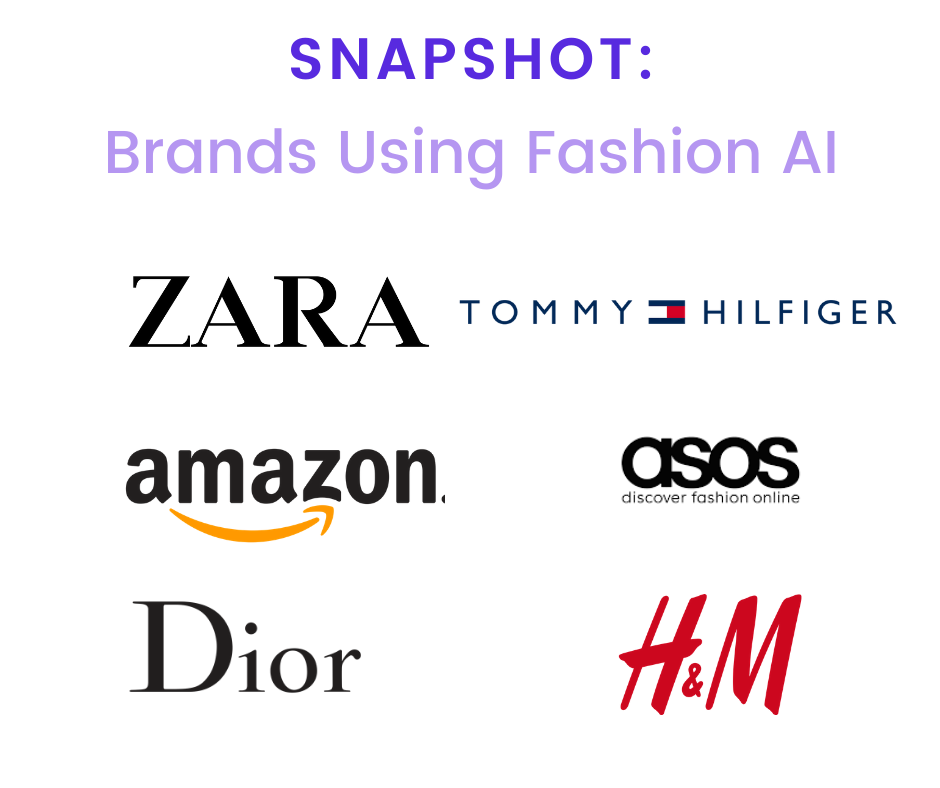
What are the tangible uses for AI in fashion?
AI in fashion can be used for: allowing customers to customize the products they’re searching for (or targeting them with customized product recommendations and creating new customer experiences. The possibilities are endless, and as a product manager, you’ve likely come across a number of tools that use AI.
But, let’s be honest. Companies are collecting large amounts of data, but still have no idea what to do with it. AI can help make sense of the data in a strategic way.
There are tools that use AI, and are fun to play with--but will they have a tangible impact on eCommerce companies?
That answer depends on the end problem eCommerce companies are trying to solve. We outline one big change (and possible problem for some retailers) in the next section.
There’s an elephant in the room that can’t be ignored: the effects of COVID-19 on customers. According to research, the pandemic pushed customer sophistication ahead by 5 years.

When considering implementing any type of fashion AI, it’s vital to understand who the new customer you’re targeting will be. The newly sophisticated customer that came from the 2020 pandemic is the result of hundreds of hours spent online, browsing products during lockdowns.
While lockdowns may be temporary, the lasting implications of this new set of digitally-savvy customers is here to stay.
The post-pandemic customer is not only digitally engaged but has higher standards for what is and isn’t acceptable. For example, text-based search might not be enough to engage customers after they’ve experienced visual search options from other retailers. Fashion AI represents an opportunity to engage sophisticated customers.
Another opportunity for implementing fashion AI? Customers are now willing to explore new brands and products now, more than ever. As long as there’s a system in place that facilitates product discovery and exploration, retailers can expect to see the benefits of digitally-savvy customers.
With digitally sophisticated customers comes high expectations from retailers. That means customers want to find what they’re looking for, in a timely manner, and with a seamless search experience--or else they’ll bounce off the retailer’s website to a competitor.
However, by integrating an engaging search experience, along with generous return policies and an omnichannel experience, this new digital sophistication represents an opportunity for those retailers willing to explore new ways of doing business through AI in fashion.
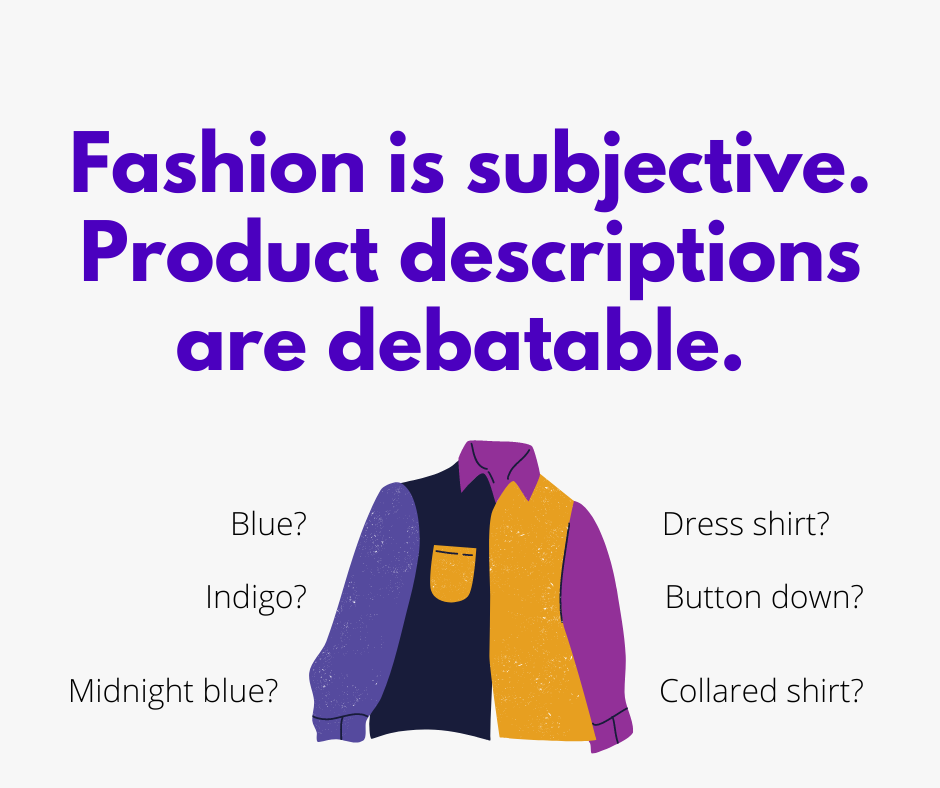
Fashion taxonomy is the science of naming and classifying products into categories based on descriptions. Sounds easy, right? However, when you take into consideration the sheer SKU size of most eCommerce retailers, the process of tagging and sorting through products becomes unmanageable.
And it’s not only a problem for the back-end team--customers are becoming increasingly frustrated by text-based search results that can’t seem to pick up their keywords. Even the most fashion-savvy customer may type in the “wrong” keyword, as products are named differently across brands. AI in fashion is circumventing the problem and meeting customer search needs with far more accuracy than text-based search.
Here’s why--according to Baynard, there are 4 types of customer search personas:

Text-based search, rooted in fashion taxonomy, does not meet the need of any of these customers.
What’s the alternative? Many retailers are implementing visual-based search tools to avoid getting customers tangled in the web of confusing fashion taxonomies. For example, the YesPlz Style Filter combines visual search with fashion AI to create a seamless search experience for customers, who can avoid having to perform numerous searches to get to the products they’re looking for:
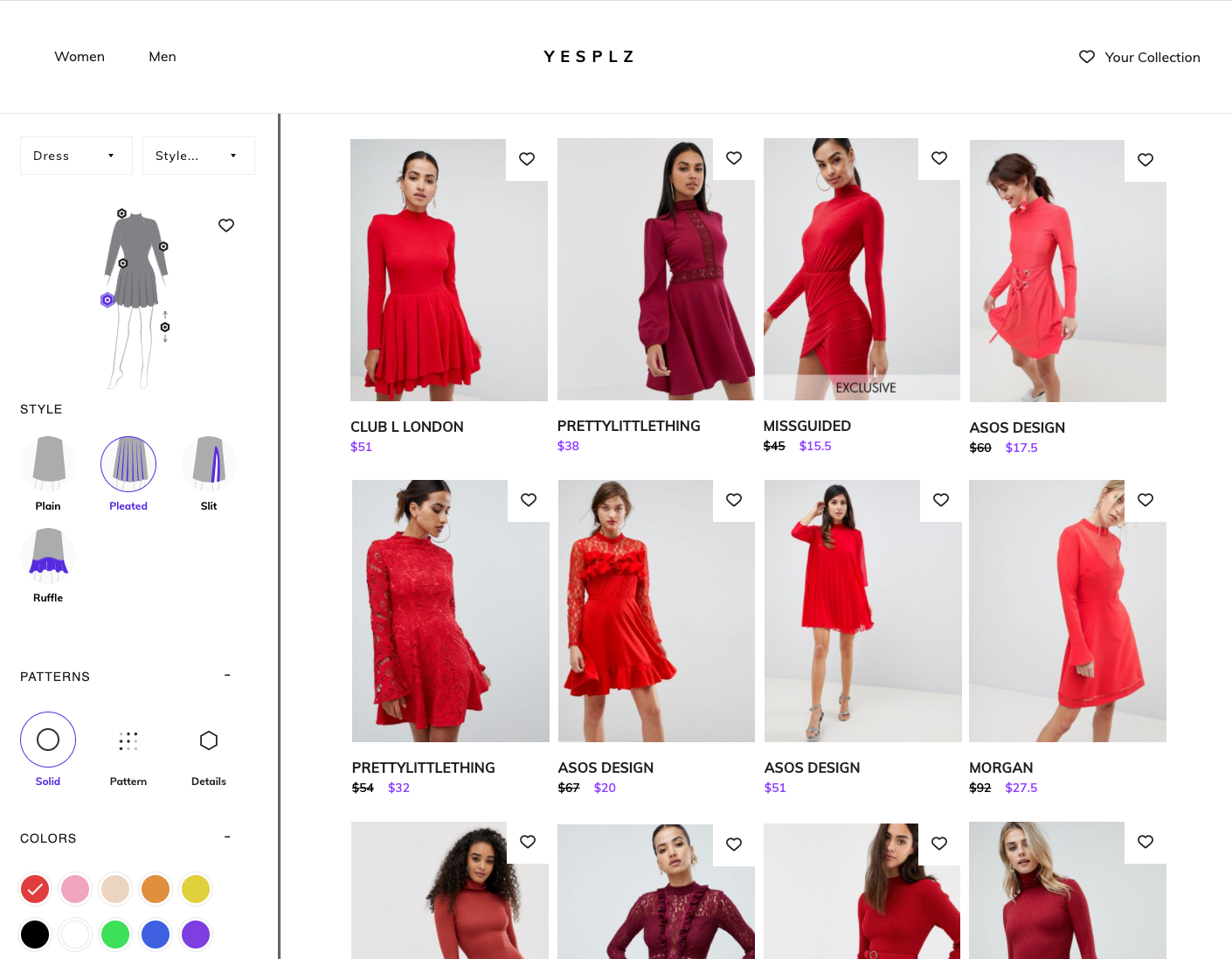
With the YesPlz Style Filter, the customer simply selects the fashion attributes she wants on a virtual mannequin, and by using AI in fashion, the filter pulls relevant search results. Engaging enough for customers with digital know-how, but easy enough to navigate based on search intent, the YesPlz Style Filter offers a way to circumvent fashion taxonomies.
While there’s no one-size-fits-all answer to how and when to adopt AI-powered search tools, according to Harvard Business Review, it’s best to look for low-hanging fruits that can have a big impact on cost and revenue. So, while the latest and greatest AI in fashion tool may sound cool, does it have an actual impact on the way customers discover, and therefore purchase products?
In the case of Kolon Mall and Lately, two leading fashion retailers in Korea, the impact was immediate. After implementing the YesPlz Style Filter (a visual-based search tool) and YesPlz Product Recommendations, both retailers saw a change in how customers discovered new products. And, on the back-end, both retailers saw increased efficiency in product tagging large SKUs--because the YesPlz Style Filter eliminated the need for the retailers to manually tag each product with attributes.
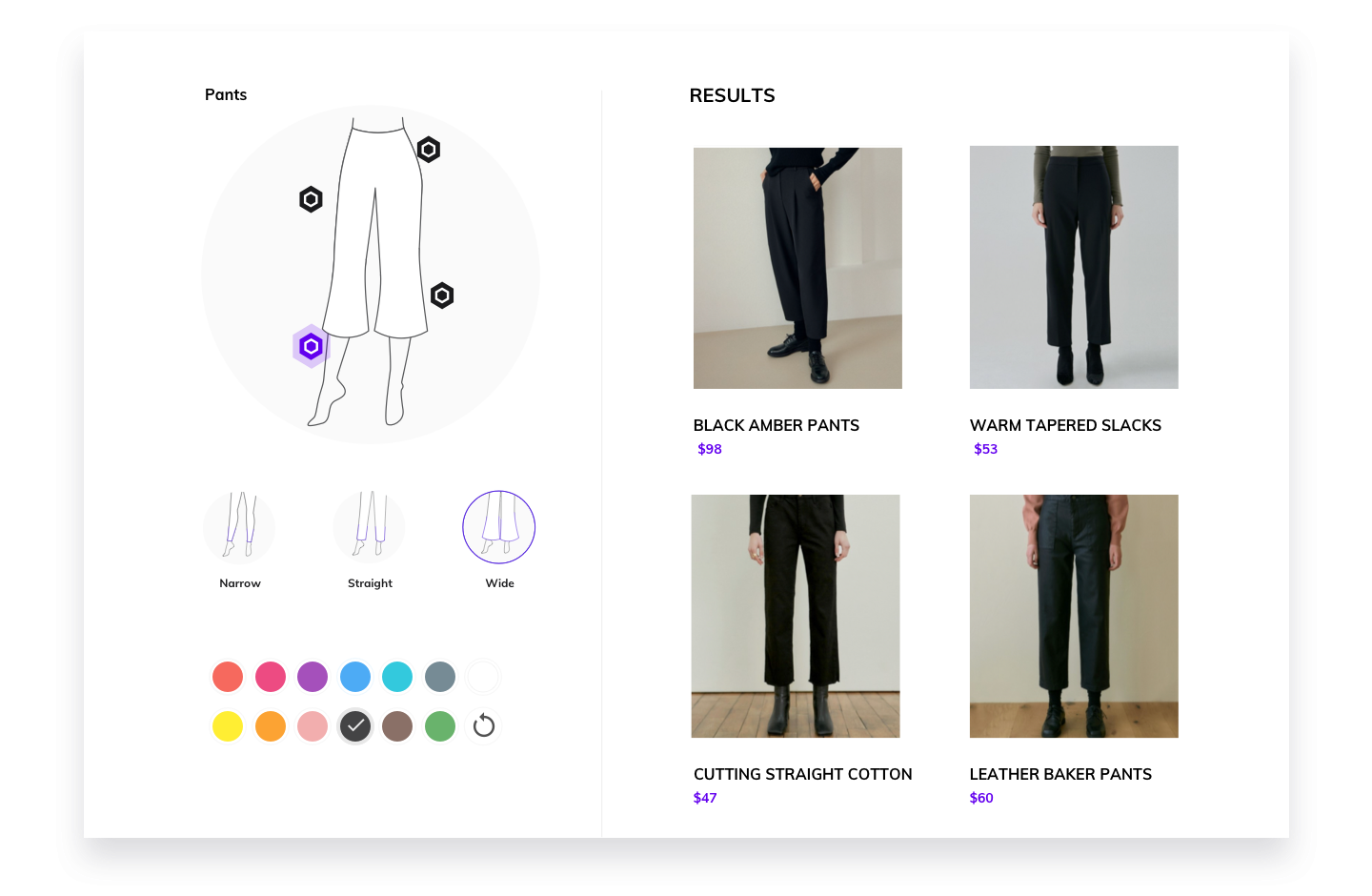
An example of a Style Filter search for “black wide cropped pants”
As with any analysis for a new tool, it’s vital to examine the problems the tools are solving. In the case of Kolon Mall and Lately, both retailers were missing opportunities because their current search navigation met neither customer nor the retailers’ internal needs.
One internal pain point included Kolon Mall and Lately’s large SKUs, which required an individual to manually tag new products.
Upon analysis of AI in fashion tools, both Kolon Mall and Lately chose to implement YesPlz AI’s tools because they had an impact on both cost and revenue. Both retailers saved in the high cost of tagging products, as well as the immeasurable cost of customers bouncing off websites due to difficult to navigate search.
It’s clear that the future of AI in fashion is search clothes by image, and visual search--but how will you, as a product manager, choose to embrace it?
...
We hope that you found this guide informative! If you have any feedback or suggestions on topics to include in future guides, please feel free to say hello here.
Looking to stay in the loop on the latest fashion tech topics? Sign up for our newsletter for the latest updates.
Written by Jess Erdman
Content Marketing Lead
I'm passionate about creating cool content. The best part? I get to learn new things about fashion tech and ecommerce everyday. Have an idea or opinion about this article? Reach out at jess@yesplz.ai
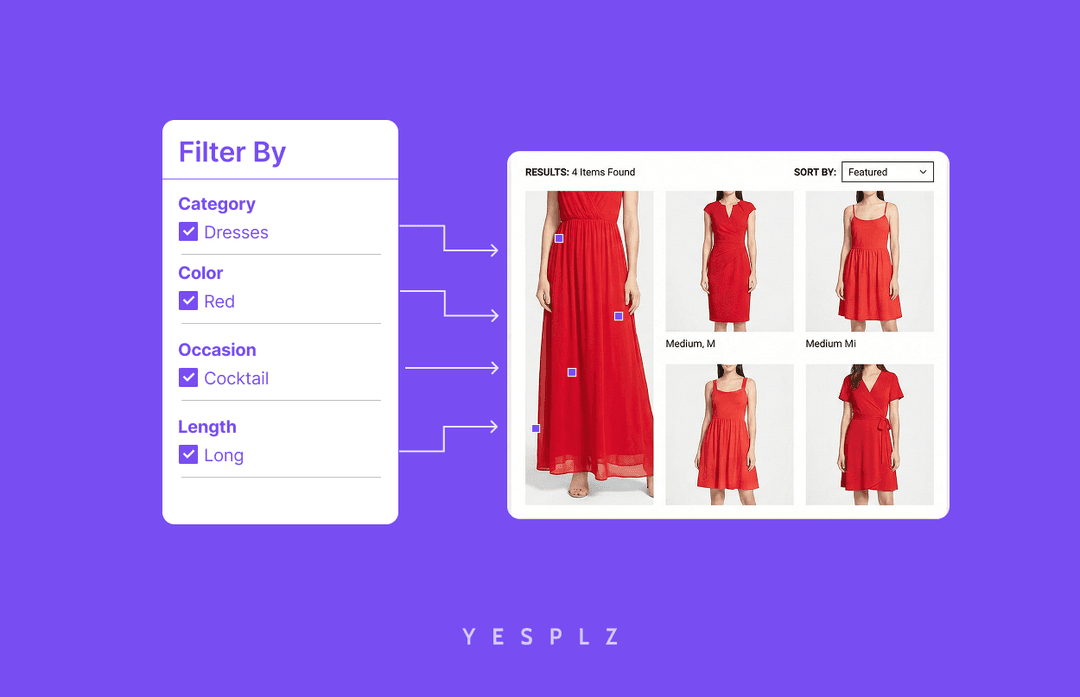
Stop losing sales to poor product filtering. Discover how AI simplifies creating Shopify filters, saving you 25-50 hours per 100 products.
by YesPlz.AI
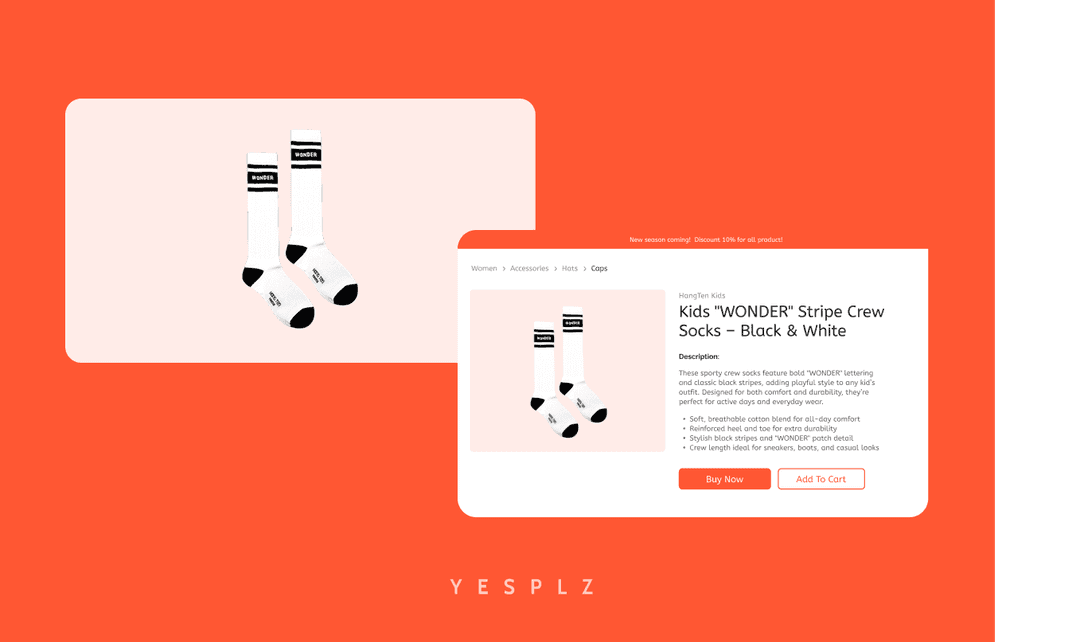
Automate Shopify product pages and cut 50–100 hours of manual work. AI generates product titles, descriptions, and metadata instantly from product images.
by YesPlz.AI